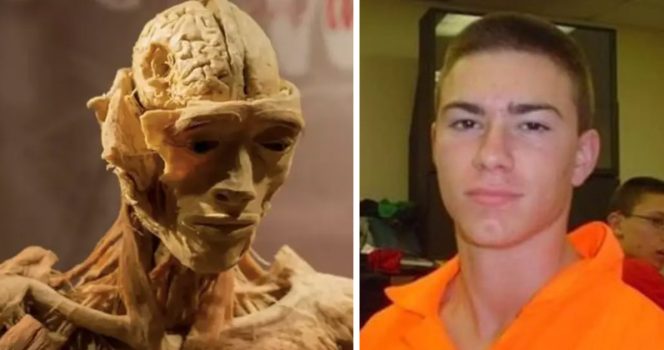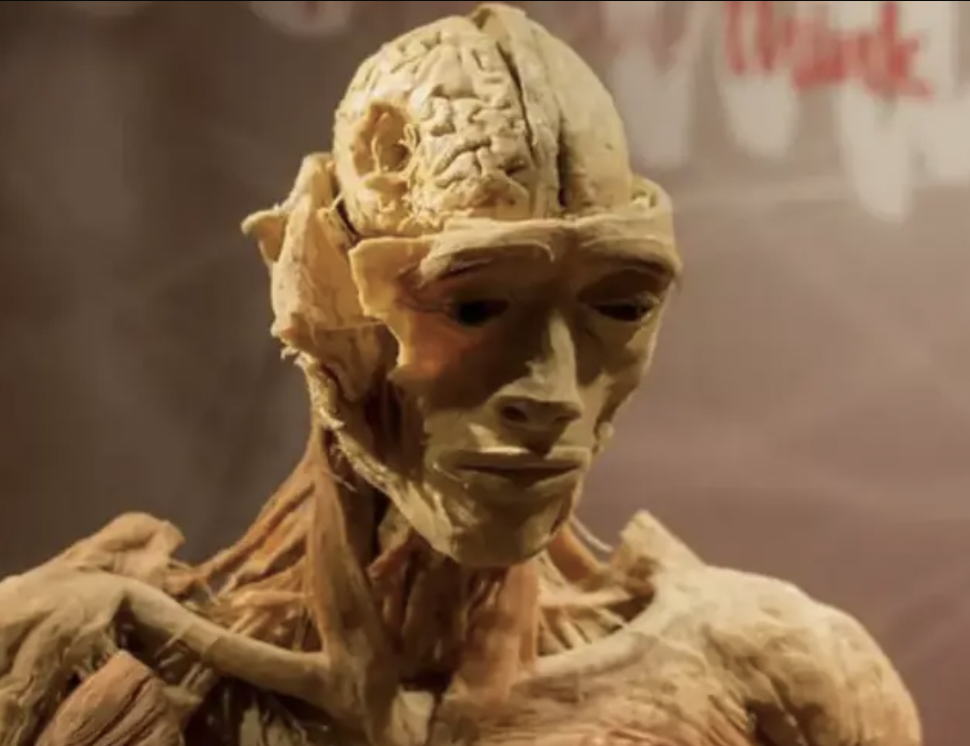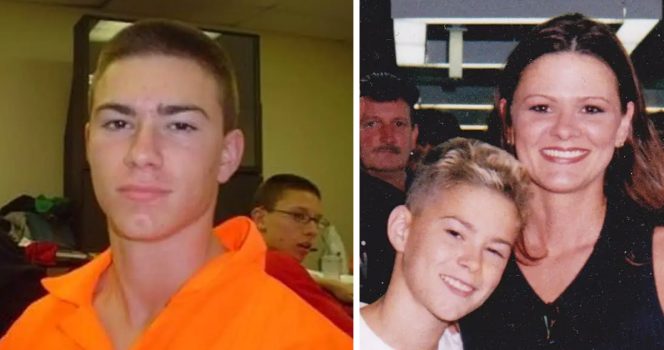
A museum in Las Vegas has formally addressed serious accusations made by a mother who believes her late son’s remains were used in a public anatomy exhibition.
Kim Erick, who has spent years searching for answers regarding the death of her son, Chris Todd Erick, insists that his body was preserved and placed on display in Real Bodies, a well-known touring exhibition showcasing human specimens that have undergone plastination.
Chris passed away in 2012 at the age of 23. He had been living at his grandmother’s home in Midlothian, Texas—approximately 30 miles south of Dallas—when he was found unresponsive in bed. According to CBS News, authorities informed Kim that her son died in his sleep after experiencing two cardiac episodes believed to be related to an undiagnosed heart condition.

“The Thinker” – Credit: Change.org
Chris’s father and grandmother arranged for his immediate cremation while Kim was still consumed with grief. She was later given a necklace containing what she was told were some of his ashes. Despite this, Kim’s doubts continued to grow, especially after receiving police photographs from the scene that, in her view, showed concerning details absent from the original report.
On Facebook, Kim wrote that the images convinced her something had gone seriously wrong.
“They had Chris in that room for two days before he passed,” she wrote. “The medical examiner said he experienced two separate cardiac events. In my view, something terrible happened during those two days. That is where Christopher died.”
In 2014, police conducted a homicide investigation in response to her concerns. Authorities ultimately found no evidence that a crime had taken place. Kim, however, did not accept the outcome and felt the case lacked transparency.
“It’s not over. There are too many unanswered questions. It feels like a cover-up,” she said.
By 2018, Kim had conducted extensive research into plastination and human-specimen exhibits. That year, she visited Real Bodies, an educational exhibition that uses preserved human forms to illustrate anatomy. During her visit, she saw a feature called “The Thinker,” a seated figure without skin, and immediately believed she recognized her son.

In an interview with The Sun, Kim explained that the resemblance was overwhelming and distressing. Seeing the figure, she said, felt like reliving the shock of losing Chris.
“It was unbelievably painful,” she recalled. “My words cannot express how much this affected me and my family. I felt like I was looking at images of my son’s preserved body. It was devastating.”
One detail that convinced her was what appeared to be a fracture on the right temple—an injury she said matched something in Chris’s medical records. She also noticed that the shoulder area, where her son once had a tattoo, appeared smoothed or altered. She interpreted this as a potential effort to remove identifying features. The combination of these observations led her to believe she had unexpectedly found her son in the exhibit.
After making the discovery, Kim launched a public effort to obtain DNA testing of the figure. She argued that scientific analysis was the only way to dispel or confirm her belief. The organizers of Real Bodies declined, stating that the specimen had been legally obtained in China and had been part of exhibitions for more than two decades—long before Chris passed away.
The company behind the exhibition, Imagine Exhibitions, Inc., provided a statement to Lead Stories firmly rejecting Kim’s claims.
“We extend our sympathy to the family, but there is no factual basis for these allegations,” the statement read. “The referenced specimen has been on continuous display in Las Vegas since 2004 and cannot be connected to the individual mentioned in these claims.”
The company added that all specimens in the exhibit are “ethically sourced and biologically unidentifiable,” emphasizing their commitment to meeting ethical and legal standards.
Lead Stories also published archived photographs of the same figure taken before 2012, which seemed to support the museum’s timeline. The outlet noted that plastination—a process involving the replacement of bodily fluids with polymers—can take up to a year or more, making it impossible for a recently deceased individual to be prepared for display so quickly.
Not long after the accusations became public, “The Thinker” was removed from the Las Vegas site. Kim later claimed that the figure was transferred to Union City, Tennessee, although she eventually lost track of its location. The museum did not publicly confirm the reasons for moving the specimen or where it was relocated.
“Chris was never left alone in life, and I don’t want him left without dignity in death,” Kim said.

Her pursuit intensified further in July 2023, when more than 300 containers of unidentified cremated remains were found in the Nevada desert. Kim has since called for forensic testing on those remains to determine whether any contain chemical indicators associated with plastination. She believes such an analysis could help clarify whether any of the remains belonged to individuals whose bodies were preserved or used in exhibitions.
While no evidence has been presented linking the discovered remains to the Real Bodies exhibit or to her son, Kim continues to advocate for further examination. She maintains that unanswered questions surrounding the circumstances of Chris’s death—and the quickness of his cremation—still trouble her deeply.
Real Bodies, meanwhile, maintains that its specimens were obtained through appropriate channels and that all documentation supports their long-standing public history. Imagine Exhibitions reiterated that none of the bodies in the exhibition can be identified, and that the figure Kim pointed to had been part of the Las Vegas display for years before Chris’s passing.
Kim’s campaign, however, remains active. She has gathered public support through social media and online petitions, encouraging authorities and the exhibition’s organizers to allow DNA testing. For her, the issue is not only about identifying a specimen but also about resolving what she sees as inconsistencies in the explanation of her son’s death.
The conflict has placed the museum at the center of an emotional and complex debate involving grief, scientific displays, ethical sourcing, and concerns from families who seek clarity and closure. For now, Kim continues to demand answers, while the exhibition stands by its records and rejects any connection between Chris and “The Thinker.”
As the situation stands, no verified evidence has emerged to directly connect Chris to the Real Bodies exhibit. Nonetheless, Kim’s determination keeps the story in public conversation, reflecting both her enduring grief and her belief that something crucial remains undiscovered. Her latest hope lies in the forensic review of the cremated remains found in Nevada—an investigation she believes may finally provide insight into a mystery she has lived with for more than a decade.